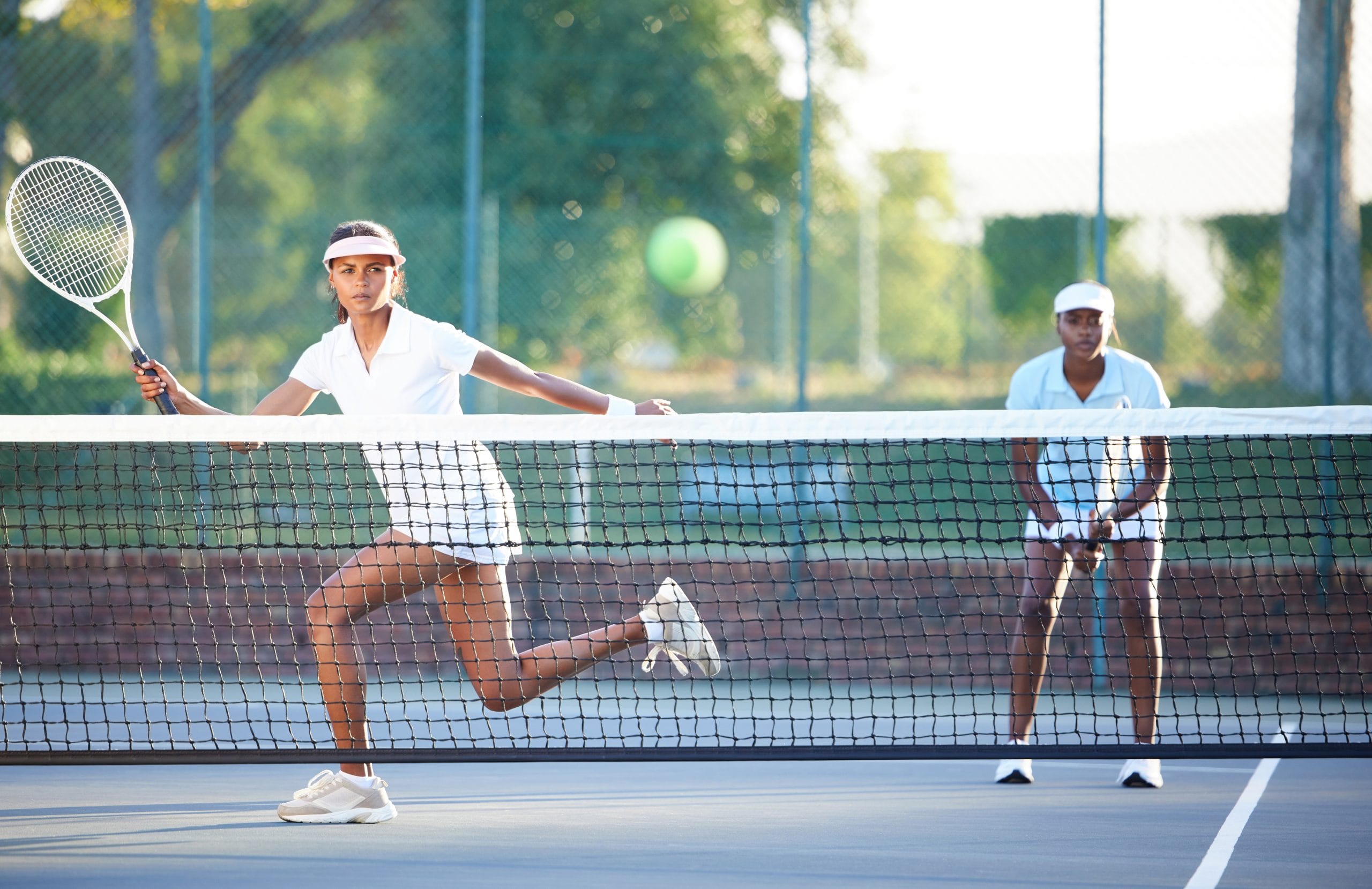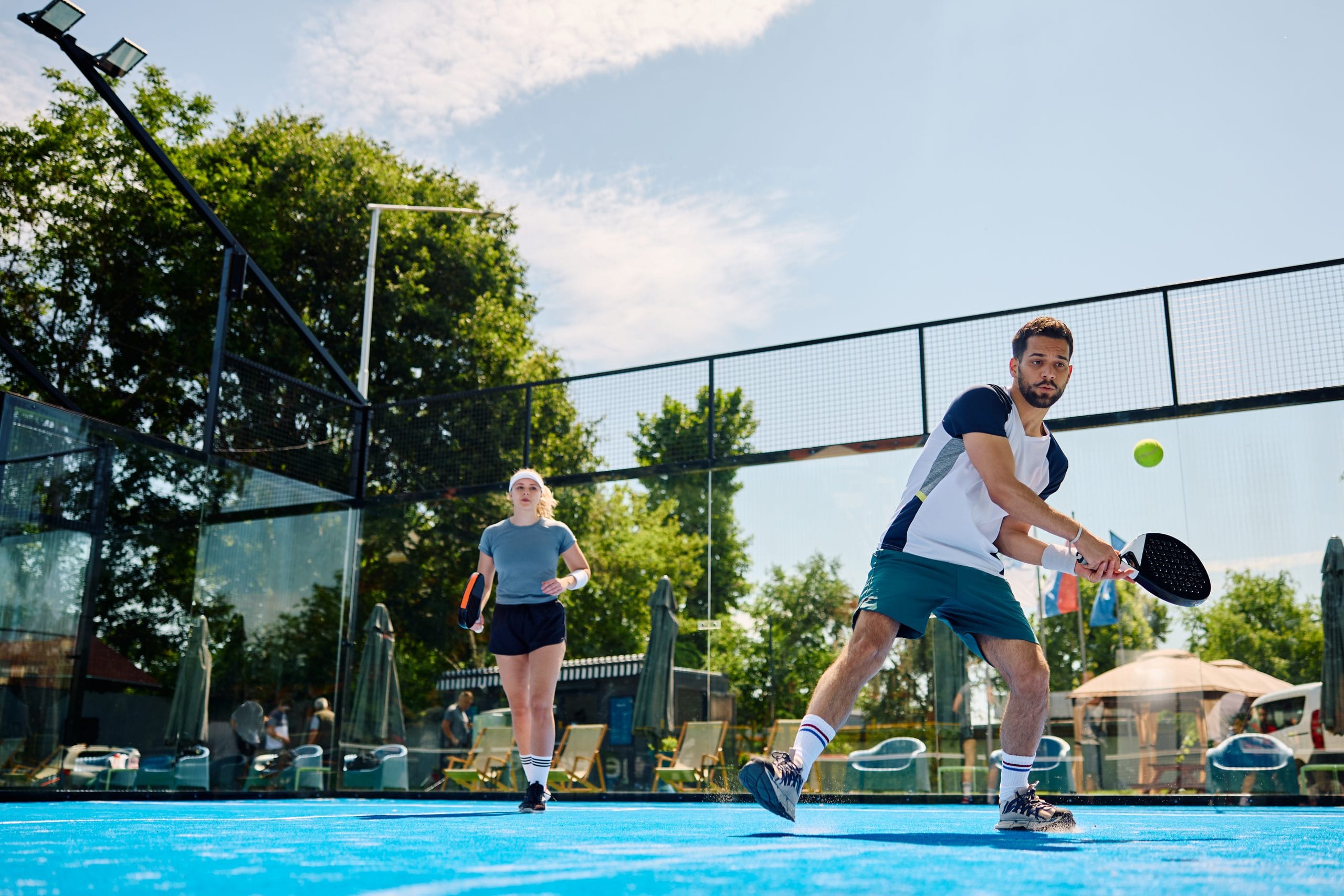It’s no surprise that tennis is one of the UK’s best-loved sports.
From the thrill of Wimbledon to the excitement of local tournaments, it’s a fast, dynamic game enjoyed by all ages and skill levels.
But there’s a new racquet sport on the rise—padel.
With sporting icons like Jurgen Klopp and Rafael Nadal among its fans, you may wonder what all the excitement is about.
So, as we count down to this year’s Liverpool International Tennis Tournament, let’s break down the key differences between padel and tennis.
Which sport will come out on top?
Playing Surface
Both padel and tennis are played on rectangular courts of different dimensions.
- A standard tennis court measures 23.77m x 8.23m for singles and 23.77m x 10.97m for doubles.
- A padel court is smaller, measuring 20m x 10m and fully enclosed by walls, much like a squash court.
The court surfaces are also different.
Tennis is played on various surfaces, including grass, clay, and hard courts, each affecting speed and bounce. Meanwhile, padel is typically played on artificial turf or acrylic surfaces for consistency.
The biggest difference? Padel’s walls allow rebounds, adding a unique strategy to gameplay. The enclosed space makes rallies longer and more engaging for beginners, whereas tennis demands greater court awareness, accuracy, and movement.

Equipment
While both sports use racquets and balls, the equipment has unique features:
- Tennis racquets are strung across an open hoop, offering a larger sweet spot for power, spin, and shot mastery, from delicate drop shots to explosive serves.
- Padel racquets have a solid, perforated surface, allowing quick reflex shots and enhanced control. However, they offer less ability to generate spin or power.
The balls also differ. Padel balls are slightly smaller, less bouncy, and lighter than tennis balls, contributing to a slower-paced, more tactical game.
Scoring & Gameplay
Padel and tennis scoring in follow the well-known 15, 30, 40, game system, but the playing style and serving rules differ:
- Padel is always played in doubles, with an underhand, diagonal serve and walls in play after the first bounce. There’s also a no-volley zone near the net, limiting certain shots.
- Tennis allows singles and doubles play, with an overhand serve and no surrounding walls. Players can volley from anywhere on the court.
The key scoring difference is that padel follows a “golden point” system at deuce, where the next point wins the game. Tennis requires two consecutive winning points after deuce, with tiebreakers at 6-6.

Skill & Physicality
Both sports demand skill. But you’ll need different abilities to excel in each:
- Tennis requires a combination of power, endurance, and tactical awareness. Players must master a range of strokes, footwork, and court coverage, making it physically demanding, especially in longer matches.
- Padel favours quick reflexes, intelligent positioning, and fast reactions due to the enclosed court and rebound play. While less physically intense than tennis, padel is highly strategic and rewarding for players of all ages and abilities.
Which sport comes out on top?
Both sports have their appeal: tennis for its endurance, power, and precision, and padel for its accessibility, fast-paced rallies, and strategic gameplay.
Of course, we prefer the competition, skill, and athleticism of tennis.
But don’t take our word for it.
With The Liverpool International Tennis Tournament 2025 on the horizon, you can experience the thrill of the game firsthand.









